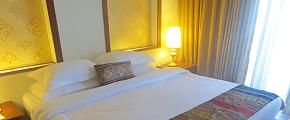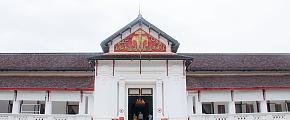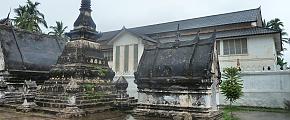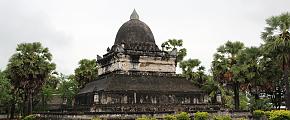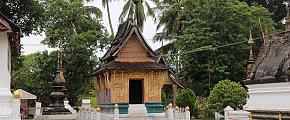Wat Aham
Two huge banyan trees mark the holy site of Wat Aham, once the residence of the Supreme Patriarch of Lao Buddhism. The temple was built in 1818 on the site of a much older temple dating from 1527.
A temple combines the worship of guardian spirits and Buddhism
A bit of a stutter is the temple's history. It is said that a tutelary shrine was built at this site to worship two guardian spirits of Luang Prabang (Luang devata): Pu No and Na No. Nearly two centuries later, King Phothisarath, a devoted Buddhist, destroyed the temple and rebuilt a Buddhist temple named Wat Aham. However, shortly after the temple was destroyed, several disasters hit the kingdom, and it was again destroyed and rebuilt- the destruction of the spirit shrine was considered to be the cause. Interestingly enough, the spirit houses were destroyed in the 20th century, and this time, local people believed that the spirits had taken residence in the two large banyan trees on the temple grounds. Even today, the spirits are still worshipped and co-exist with Buddhism.
Despite a relatively simple façadewith porches and overlapping roofs, the interior is bright and colorful. The pillars and beams are painted red and gold, and the walls are covered with murals depicting Buddhist doctrines. The Wat Aham also houses some wooden masks that are used for the famous "mask dances" performed during the Lunar New Year in Laos.
You might also be interest in the Wat XiengThong, Wat Visoun near the Wat Aham and the following sample itinerary includes a visit the Wat Aham. You might want to check it out.

